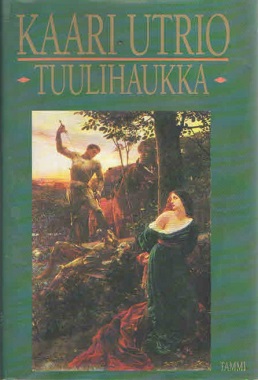
Year 1043 (MXLIII) was a common year starting on Saturday of the Julian calendar.

Yaroslav I Vladimirovich, better known as Yaroslav the Wise, was Grand Prince of Kiev from 1019 until his death in 1054. He was also earlier Prince of Novgorod from 1010 to 1034 and Prince of Rostov from 987 to 1010, uniting the principalities for a time. Yaroslav's baptismal name was George after Saint George.

Year 988 (CMLXXXVIII) was a leap year starting on Sunday of the Julian calendar.

Year 970 (CMLXX) was a common year starting on Saturday of the Julian calendar, the 970th year of the Common Era (CE) and Anno Domini designations, the 970th year of the 1st millennium, the 70th year of the 10th century, and the 1st year of the 970s decade.
The Grand Prince of Kiev was the title of the monarch of Kievan Rus', residing in Kiev from the 10th to 13th centuries. In the 13th century, Kiev became an appanage principality first of the grand prince of Vladimir and the Mongol Golden Horde governors, and later was taken over by the Grand Duchy of Lithuania.

John I Tzimiskes was the senior Byzantine emperor from 969 to 976. An intuitive and successful general who married into the influential Skleros family, he strengthened and expanded the Byzantine Empire to include Thrace and Syria by warring with the Rus' under Sviatoslav I and the Fatimids respectively.

Knyaz or knez, also knjaz, kniaz is a historical Slavic title, used both as a royal and noble title in different times of history and different ancient Slavic lands. It is usually translated into English as "prince" or "king", depending on specific historical context and the potentially known Latin equivalents of the title for each bearer of the name. These translations probably derive from the fact that the title tsar was often treated as equivalent to "king" or "emperor" by European monarchs. In Latin sources the title is usually translated as princeps, but the word was originally derived from the common Germanic *kuningaz (king).
Grand prince or great prince is a title of nobility ranked in honour below Emperor, equal to Archduke, King, Grand duke and Prince-Archbishop; above a Sovereign Prince and Duke.
The family of Vladimir I, popularly known as Vladimir the Great, prince of Kievan Rus', is subject to scholarly studies. The primary sources about his life, such as the Primary Chronicle and the Chronicon Thietmari of Thietmar of Merseburg, are legendary, and require critical scrutiny to separate fact from fiction.

Kaari Marjatta Utrio is a Finnish writer. She has written over 35 historical novels and 13 non-fiction books on historical topics. She is a historian, holding the degree of Master of Arts from the University of Helsinki, and has retired from the position of Professor in service of the Finnish State Commission of Fine Arts.

Vehkalahden neidot is a 1971 historical novel by Finnish author Kaari Utrio.

Uhritulet is a 1993 historical novel by Finnish author Kaari Utrio. It is set in 14th century Finland. According to journalist Suvi Kerttula, Vaskilintu (1992), Tuulihaukka (1995) and Uhritulet are Utrio's most important works.

The Spring of the Moonstone is a 1995 historical romance novel by Finnish author Kaari Utrio. It is a romantic story from 11th century Finland, about love and hate and the meeting of two cultures. The book was published as a commemorative book for the 60th anniversary of the Kalevala Women's Association. The book contains several photographs and illustrations. In 1995, the novel was adapted into a play by Sarika Lipasti.

Tuulihaukka is a 1995 historical novel by Finnish author Kaari Utrio. It is set in 11th century Europe. Tuulihaukka and Vaskilintu are considered to be Utrio's most important works.
Meri Marjatta Utrio was a Finnish editor and translator.

Ruma kreivitär is a 2002 historical novel by Finnish author Kaari Utrio telling a story of poor aristocrats and richening middle-class in the 1830s Finland.

Saippuaprinsessa is a 2004 historical novel by Finnish author Kaari Utrio focusing on the frivolities of the high society in Helsinki, the capital of Grand Duchy of Finland in the 1830s.

The Rus', also known as Russes, were a people in early medieval Eastern Europe. The scholarly consensus holds that they were originally Norsemen, mainly originating from present-day Sweden, who settled and ruled along the river-routes between the Baltic and the Black Seas from around the 8th to 11th centuries AD. In the 9th century, they formed the state of Kievan Rusʹ, where the ruling Norsemen along with local Finnic tribes gradually assimilated into the East Slavic population, with Old East Slavic becoming the common spoken language. Old Norse remained familiar to the elite until their complete assimilation by the second half of the 11th century, and in rural areas, vestiges of Norse culture persisted as late as the 14th and early 15th centuries, particularly in the north.
Originally, the name Rus' referred to the people, regions, and medieval principalities within the territory of the Kievan Rus'. Today its territory is distributed among Belarus, Ukraine, Eastern Poland, and the European section of Russia. The term Россия (Rossiya), comes from the Byzantine Greek designation of the Rus', Ρωσσία Rossía—related to both Modern Greek: Ρως, romanized: Ros, lit. 'Rus'', and Ρωσία.

Kievan Rus', also known as Kyivan Rus', was the first East Slavic state and later an amalgam of principalities in Eastern Europe from the late 9th to the mid-13th century. Encompassing a variety of polities and peoples, including East Slavic, Norse, and Finnic, it was ruled by the Rurik dynasty, founded by the Varangian prince Rurik. The name was coined by Russian historians in the 19th century to describe the period when Kiev was at the center. At its greatest extent in the mid-11th century, Kievan Rus' stretched from the White Sea in the north to the Black Sea in the south and from the headwaters of the Vistula in the west to the Taman Peninsula in the east, uniting the East Slavic tribes.















